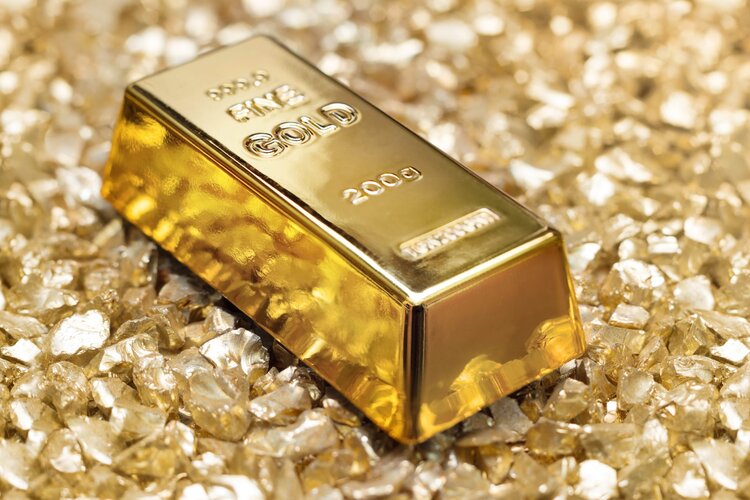
- Gold price drops slightly as the focus shifts to Fed Powell’s testimony.
- The appeal for the US Dollar weakens as February’s PMI figures cast doubts over the strong US economic outlook.
- US ADP Employment and JOLTS Job Openings data will provide fresh cues over job growth.
Gold price (XAU/USD) edges down in Wednesday’s European session after failing to recapture the all-time high of around $2,145.00. The precious metal is expected to stay on the sidelines as investors await Federal Reserve (Fed) Chair Jerome Powell’s testimony before Congress, starting at around 15:00 GMT.
Investors expect that Jerome Powell will support keeping interest rates in the range of 5.25%-5.50% until he gets evidence that inflation will return to the desired rate of 2%. Non-yielding assets, such as Gold, face outflows when the Fed favors a hawkish interest rate stance for an extended period.
Market participants will also focus on the United States ADP Employment Change and JOLTS Job Openings data for February and January, respectively, which will provide more insights into labor demand.
- Gold price falls slightly from a near record high of $2,141.85 amid caution among market participants ahead of Federal Reserve Chair Jerome Powell’s testimony before Congress. Investors will keenly watch the guidance from Jerome Powell on inflation, the labor market, and interest rates.
- While market participants want to know about the time frame and the degree of rate cuts this year, Powell is likely to be reluctant to offer in-depth information on rate cuts. Fed policymakers are less likely to focus on policy normalization before gaining confidence that inflation will come down to the 2% target. The Fed wants to see inflation declining for months as evidence before considering rate cuts.
- Jerome Powell is expected to maintain hawkish rhetoric as the progress in price pressures decelerating towards the 2% target is slow and labor market conditions are resilient.
- Powell’s guidance will impact market expectations for rate cuts in the June policy meeting. As per the CME Fedwatch tool, the chances for a 25 basis points (bps) rate cut for June’s policy meeting have increased to 58% from 53% on Tuesday.
- Apart from Powell’s testimony, market participants will focus on the US ADP Employment Change for February and JOLTS Job Openings for January, which will be published at 13:15 and 15:00 GMT, respectively. US private employers are forecasted to have hired 150K job-seekers against the prior reading of 107K and have posted 8.9 million new job openings in January against 9.027 million in December.
- The US Dollar Index (DXY), which measures the Greenback’s value against six major currencies, continues its losing spell for the fourth trading session on Wednesday. The USD Index hovers near a weekly low of around 103.60 as weak ISM Manufacturing and Services PMIs for February have pointed to slowing economic growth.
Gold price falls gradually after failing to test the all-time high near $2,145. The yellow metal trades inside Tuesday’s trading range. The near-term appeal for Gold remains bullish as it has delivered a breakout of the Symmetrical Triangle pattern formed on a daily time frame. The breakout of the aforementioned chart pattern exhibits a volatility expansion, which leads to wider ticks on the upside and heavy volume.
The 14-period Relative Strength Index (RSI) holds above 60.00, indicating a bullish momentum ahead. The RSI (14) is not showing any divergence signals but has reached overbought territory.
Gold FAQs
Gold has played a key role in human’s history as it has been widely used as a store of value and medium of exchange. Currently, apart from its shine and usage for jewelry, the precious metal is widely seen as a safe-haven asset, meaning that it is considered a good investment during turbulent times. Gold is also widely seen as a hedge against inflation and against depreciating currencies as it doesn’t rely on any specific issuer or government.
Central banks are the biggest Gold holders. In their aim to support their currencies in turbulent times, central banks tend to diversify their reserves and buy Gold to improve the perceived strength of the economy and the currency. High Gold reserves can be a source of trust for a country’s solvency. Central banks added 1,136 tonnes of Gold worth around $70 billion to their reserves in 2022, according to data from the World Gold Council. This is the highest yearly purchase since records began. Central banks from emerging economies such as China, India and Turkey are quickly increasing their Gold reserves.
Gold has an inverse correlation with the US Dollar and US Treasuries, which are both major reserve and safe-haven assets. When the Dollar depreciates, Gold tends to rise, enabling investors and central banks to diversify their assets in turbulent times. Gold is also inversely correlated with risk assets. A rally in the stock market tends to weaken Gold price, while sell-offs in riskier markets tend to favor the precious metal.
The price can move due to a wide range of factors. Geopolitical instability or fears of a deep recession can quickly make Gold price escalate due to its safe-haven status. As a yield-less asset, Gold tends to rise with lower interest rates, while higher cost of money usually weighs down on the yellow metal. Still, most moves depend on how the US Dollar (USD) behaves as the asset is priced in dollars (XAU/USD). A strong Dollar tends to keep the price of Gold controlled, whereas a weaker Dollar is likely to push Gold prices up.
